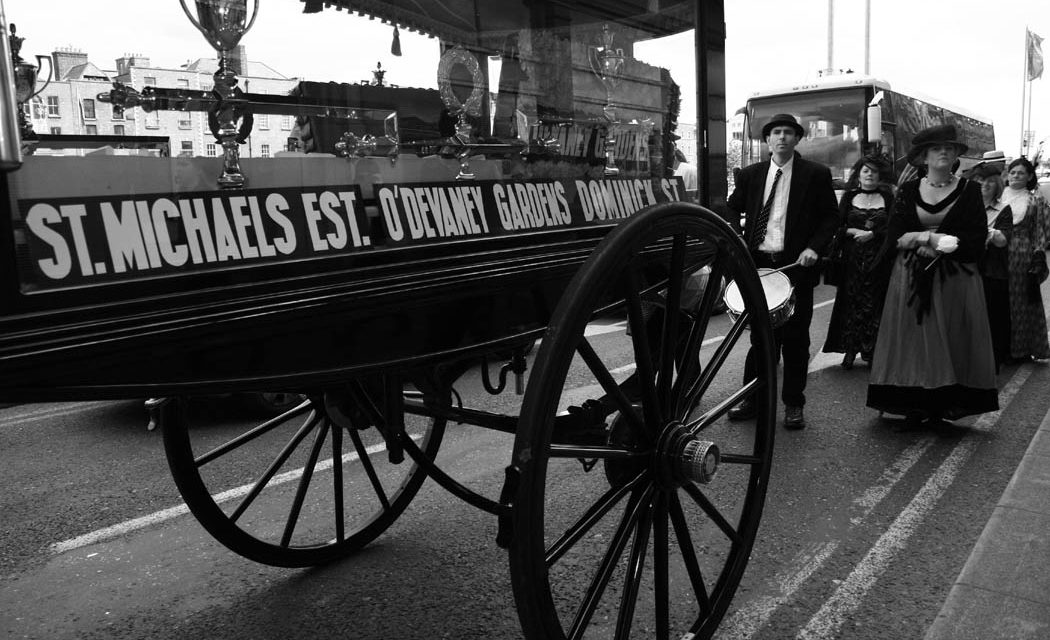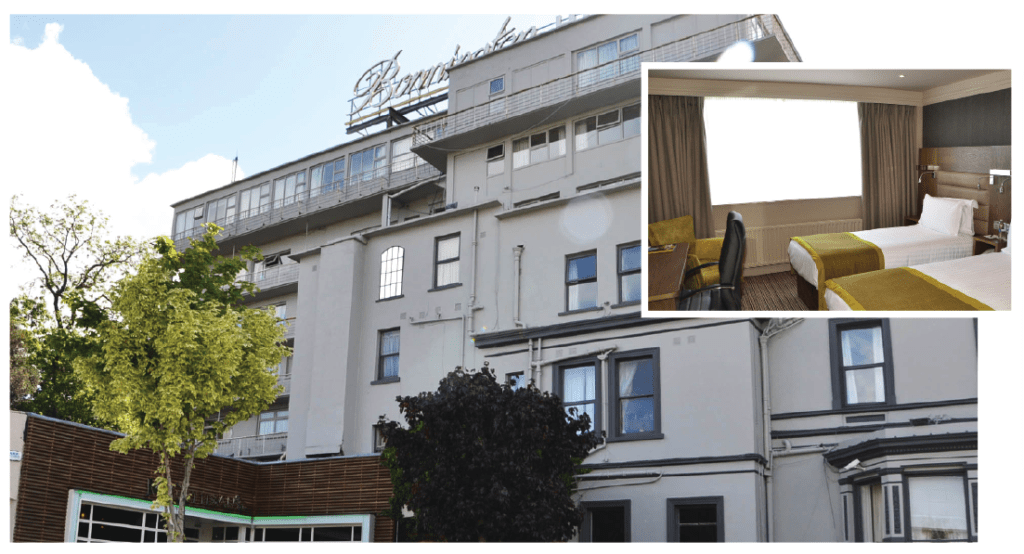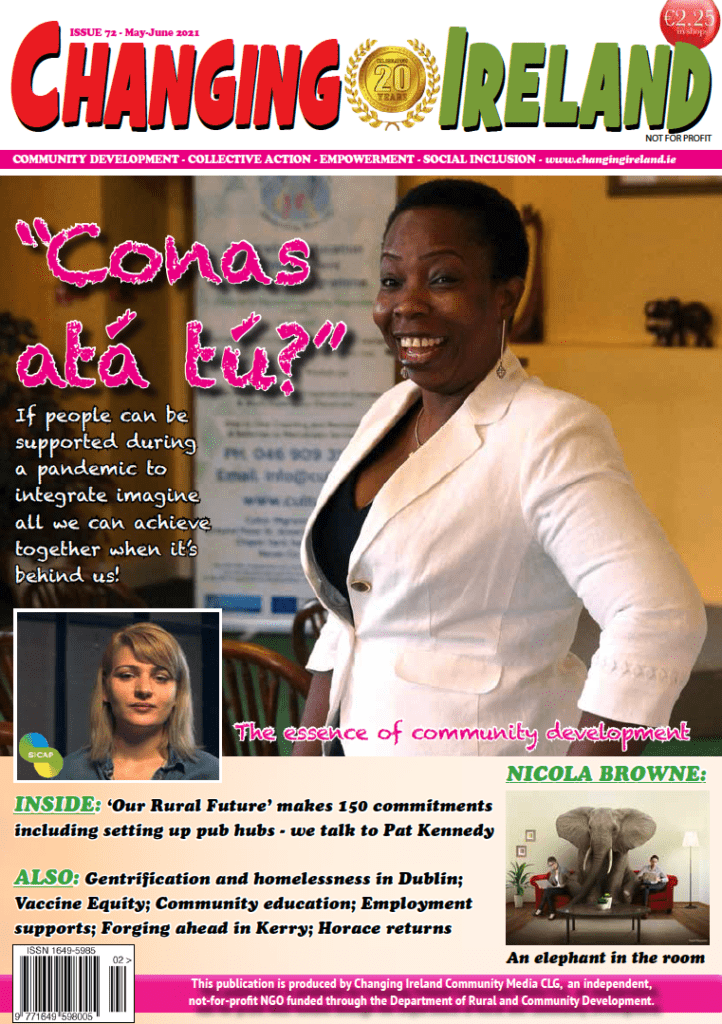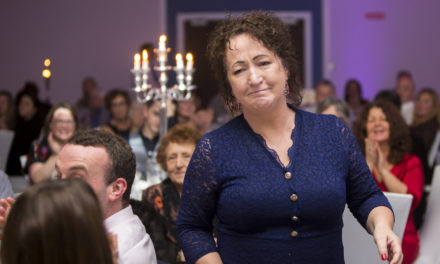Is gentrification stealing Dublin city from its people? “We have a great fear as this land is such rich land,” says Rita Fagan of Inchicore. “We see a hollowing out of traditional communities,” says Noel Wardick of Dublin City Community Co-operative. Both talk to journalist Laoise Neylon.
CAPTION: Archive photo of protest over housing policies. Source: Indymedia.
Community activist Rita Fagan recalls attending a meeting back in 2008 together with her mother, the well-known tenants’ rights activist, Madge Fagan, who was 88 at the time.
The meeting was organised by Dublin City Council. “They had all the plans up for the regeneration of the Liberties,” says Rita.

• Rita Fagan behind her desk – from our archives.
One of the council officials asked Madge Fagan where she lived.
She responded that she lived in the flats on South Summer Street, in the Liberties. “That’s going to be a park,” the council official said.
“We said ‘what? – that’s going to be a park’?” says Rita. “Well, that’s what you think it might be.”
The council planned to demolish their homes but no one had spoken to the residents about it, she says.
In Dublin regeneration often means displacement, she says and gentrification is starting to threaten the character of some areas.
Gentrification causes lots of problems in the inner city and the high housing costs can cause problems for the delivery of public services, says Noel Wardick, CEO of the Dublin City Community Cooperative.
Displacement
Locals in the Liberties feared that the regeneration plans would result in fewer social homes and some of them being forced out of the Liberties, as has happened elsewhere in Dublin, says Rita.
So they organised protests and disrupted the meetings, she recalled: “The local people stood up and fought.”
Displacement “is a common experience for people who are low paid,” says Rita.
When a regeneration project is introduced it often means many people are provided with homes outside their area. They end up living somewhere where they have no family or community links, she says.
Without that support network, many people struggle. “You get lost,” she says.
The council dropped the plans for the regeneration of the Liberties because of cutbacks in the last recession but locals fear it could still be on the cards, she says.
“We have a great fear as this land is such rich land,” she says.
Rita has campaigned against the privatisation of public land for many years. “They land-grabbed loads of the inner city,” she says.
Gentrification
Noting that gentrification is a problem across Europe, Noel says that if an area becomes very trendy and a lot of wealthy people move in, then everything becomes expensive so less wealthy people have to move out.
Gentrification causes major problems in the inner city: “We see a hollowing out of traditional communities,” he says.

• Noel Wardick, manager of Dublin City Community Co-op.
Local people who can afford to buy their own home often have to move out to the commuter belts, he says, to places like Meath, Louth, Kildare.
That is bad for the inner city communities as they lose out on the contribution those people would have made to their local community, says Noel.
There are few homes for locals to buy in the city centre because most new developments are bought up by investment funds, for buy to let accommodation.
Together with student accommodation and co-living that all leads to a “transitory community,” he says.
There is a high turnover of teachers in inner-city schools because they cannot afford to buy a home in or near the city centre.
That is not good for schools, many of which are Deis schools, where the children would benefit from more consistency. “It is harder and harder for schools to recruit,” he says.
The problem is similar for the Gardaí and other public services, he says.
We need to move away from looking at housing as a commodity and look at it as a “foundation for communities and housing as a right,” says Noel.
In some areas of the inner city, Dublin City Council will not purchase the legally required 10 per cent of social housing in private developments because it says it is too expensive.
“It is disappointing and it’s frustrating, but it’s not at all surprising in an Irish context,” he says. “Deference is always shown to big developers and deference is always shown to money and to profit.”
There needs to be an equivalent amount of social and affordable housing built as high-end private housing, says Rita. “The character of these areas are the rooted families and communities of Dublin. We make this city,” she says.
This article is part of a 3-part series, as published in Issue 72, Spring 2021, of ‘Changing Ireland.
READ MORE: Can you really be at home in a hotel? – By Laoise Neylon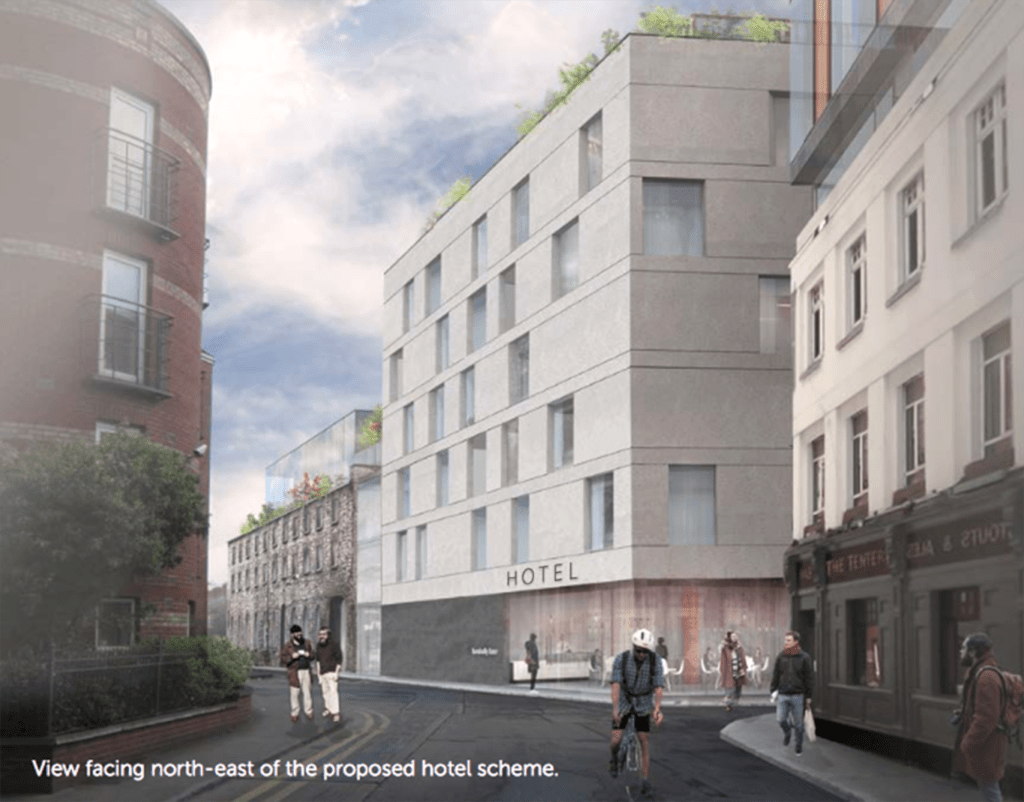
READ MORE: Profiteering from luxury apartments is beating the life out of communities – By Laoise Neylon
DOWNLOAD & READ THE FULL MAGAZINE (PDF): Spring 2021 Edition

